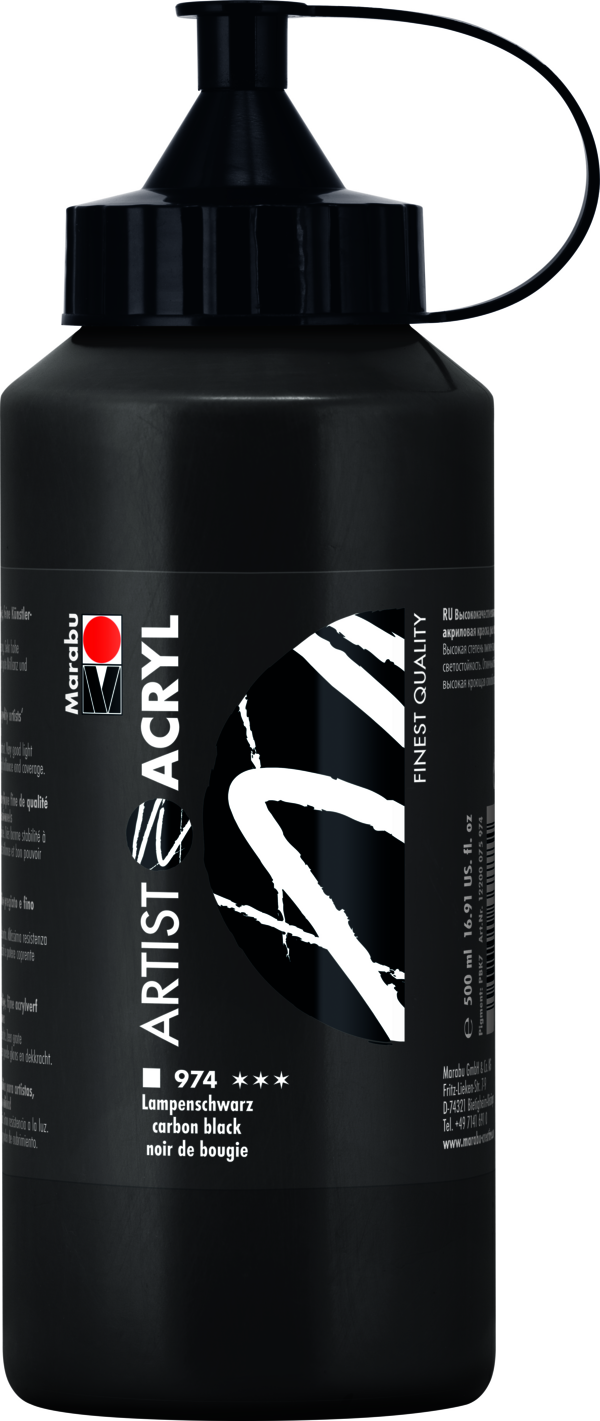Marabu Artist Acryl
carbon black 974, 500 ml
12200075974


Fine, high-quality water-based artists' acrylic paints. Ideal for all acrylic painting techniques on canvas, cardboard, paper, wood and many other materials The bright colours can be mixed together and once dry, are waterproof and lightfast. The highly pigmented, paste-like consistency of the Acryl paints creates a flexible paint layer when applied.
Depending on your preference, Artist Acrylic can be used undiluted or diluted with a little water. Painting over or adding to the pictures is possible at any time. With its pasty consistency, it can even be applied with a spatula. To get started, transfer or trace a template onto the painting surface.
For mixing colours, a colour circle provides orientation at the beginning. Acrylic paint dries a little darker - so tend to mix the colours a little lighter and use black sparingly. When changing the colour shade, clean the brush well with water so that no mixed colour results.
When painting, it is a good idea to start with the background and then work your way forward, layer by layer. Minor mistakes can simply be painted over with the next layer. For a perfect colour gradient, start with a pure light colour and apply it over the entire surface. Gradually add more of the second colour tone to the still wet colour and slowly wipe it into each other to create an even transition to the second colour tone. A large, flat brush or a sponge is very suitable for this technique. For small motifs, use correspondingly smaller brushes and for details it is best to use the smallest brush with a round tip.
Important: After painting, thoroughly wash out the tools used immediately.Depending on your preference, Artist Acryl can be used undiluted or diluted with a little water. Painting over or adding to the pictures is possible at any time. With its pasty consistency, it can even be applied with a spatula. To get started, transfer or trace a template onto the painting surface.
For mixing colours, a colour circle provides orientation at the beginning. Acrylic paint dries a little darker - so tend to mix the colours a little lighter and use black sparingly. When changing the colour shade, clean the brush well with water so that no mixed colour results.
When painting, it is a good idea to start with the background and then work your way forward, layer by layer. Minor mistakes can simply be painted over with the next layer. For a perfect colour gradient, start with a pure light colour and apply it over the entire surface. Gradually add more of the second colour tone to the still wet paint and slowly wipe it into each other to create an even transition to the second colour shade. A large, flat brush or a sponge is very suitable for this technique. For small motifs, use correspondingly smaller brushes and for details it is best to use the smallest brush with a round tip.
Important: After painting, immediately wash out the tools used thoroughly.